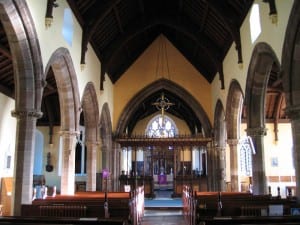Last Wednesday we heard from four newly minted PhD candidates in the College of Arts. Tasked with explaining their topic in five minutes just a few months into their doctorates, the students produced a number of suggestive research questions and fruitful lines of discussion.
Ben Perkins (English) began with the paradoxes that characterise Tennyson’s handling of the non-European subject—at once peddling mysticised dreams of religious tolerance and propagating racist stereotypes.
John Davies (History and English) took us through his labours in the Tennyson Research Centre, including rarely seen examples of Tennyson’s annotations and doodles, as a way of introducing questions both curatorial and theoretical.
Grace Harvey (English) persuasively spoke of the male experience of sociability in the late eighteenth century, triangulating philosophy, literature, and biography in her account of William Godwin and his circle.
Finally, Tom Kupper (Art History) is working on amateur ecclesiastical design and decoration between 1830 and 1880. Tom poignantly evoked the forgotten amateurs who furnished Britain’s churches, such as Æneas B. Hutchison, vicar in a number of parishes during the Victorian period, of whom we know little more than his (magnificent) name and his enthusiasm for restoration.
Thanks to all presenters for their thought-provoking contributions. We hope to have each of you back for an extended research paper further into your projects.
Below: A number of Tom Kupper’s examples of amateur ecclesiastical design were drawn from St Mary and All Saints, the parish church of Bingham—less than an hour’s drive from Lincoln.

Leave a Reply